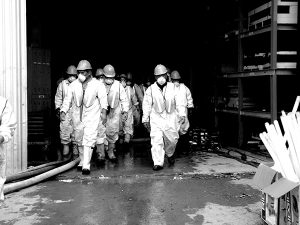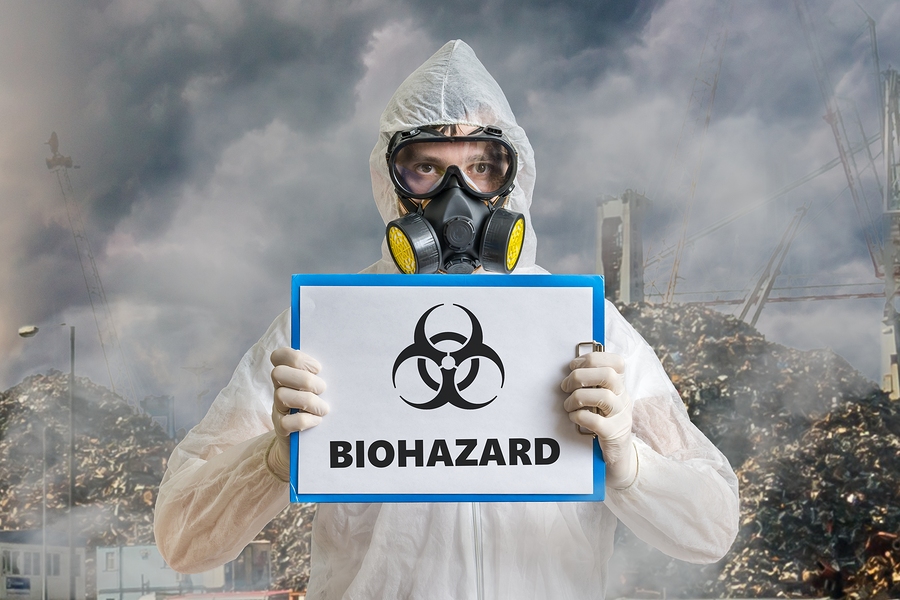Specific ATP Testing for Effective Hygiene and Health Surveillance
Specific ATP Testing for Effective Hygiene and Health Surveillance
Blog Article
Specialist Biohazard Cleansing and Purification for Blood, Bodily Fluids, and Hazardous Products
The prospective health dangers linked with exposure to biohazards emphasize the vital need for precise handling and thorough cleanup. As we browse the detailed landscape of biohazard clean-up, recognizing the nuances of regulations, conformity, and the specific equipment at play becomes vital in making sure a detailed and safe purification procedure.
Wellness Risks of Biohazard Direct Exposure
Exposure to biohazards positions considerable health threats that can cause severe consequences for individuals and areas alike. Biohazards include a variety of organic materials, consisting of blood, physical liquids, mold, bacteria, viruses, and other possibly contagious materials. When individuals enter contact with these biohazards, whether via accidents, incorrect handling, or ecological exposure, they deal with the threat of contracting major diseases or illness.
One of the main health risks related to biohazard exposure is the transmission of transmittable illness. Bloodborne virus such as HIV, liver disease B and C, and numerous germs can be existing in biohazardous materials, presenting a direct threat to human health and wellness. Inhaling airborne biohazards like mold and mildew spores or entering into contact with contaminated surface areas can additionally cause breathing issues, allergic reactions, and various other damaging wellness impacts.
Additionally, biohazard exposure can have lasting health and wellness implications, with some diseases manifesting years after the first call (Blood Cleanup). As a result, it is important to prioritize correct biohazard cleansing and decontamination to minimize these health and wellness risks and make sure the safety of communities and people

Specialized Training for Biohazard Cleanup
When it involves handling biohazard clean-up successfully and securely, specialized training plays an essential function in making certain proper decontamination treatments are followed. Biohazard cleanup needs certain expertise and skills to efficiently minimize risks connected with bloodborne pathogens, bodily liquids, and hazardous products. Specialists educated in biohazard cleaning undertake rigorous direction on how to safely handle, eliminate, and get rid of biohazardous materials to prevent contamination and direct exposure.
Specialized training for biohazard cleanup covers a series of important subjects, consisting of proper individual protective tools (PPE) use, bloodborne pathogen understanding, decontamination strategies, and harmful waste disposal methods. People learnt biohazard cleaning are geared up with the necessary knowledge to examine contamination degrees, determine potential dangers, and implement ideal cleaning treatments in compliance with governing standards.
Continuous training and education are critical in the field of biohazard clean-up to remain updated on the most up to date purification modern technologies, security methods, and guidelines. By purchasing specialized training, biohazard cleanup specialists can successfully reply to emergency cleaning circumstances and protect both public health and the environment.
Importance of Correct Decontamination Techniques
Making use of proper purification methods is essential in biohazard cleaning to successfully lessen and eliminate unsafe materials wellness risks. Reliable decontamination not just ensures the elimination of visible traces of blood, physical fluids, and various other biohazards however additionally targets unnoticeable virus that may present serious health and wellness threats if not properly removed. By complying with strict decontamination procedures, educated professionals can substantially reduce the danger of direct exposure to dangerous microorganisms, viruses, and microorganisms that could cause infections or diseases.
Appropriate purification strategies involve the use of customized tools and disinfectants that are particularly designed to reduce the effects of biohazards properly. Detailed cleaning and disinfection of contaminated locations are important to protect against the spread of virus and ensure a risk-free atmosphere for passengers. In addition, the proper disposal of biohazardous waste adhering to purification treatments is essential in stopping contamination of other surfaces or individuals.

Devices and Devices for Safe Cleanup
The proper tools and devices play a vital function in guaranteeing the safe and reliable clean-up of biohazardous products. When handling blood, bodily fluids, or unsafe products, biohazard cleaning professionals find out here depend on specialized gear to reduce exposure risks and completely sanitize the afflicted location. Personal safety tools (PPE) such as handwear covers, goggles, coveralls, and masks are important to shield versus direct call with potentially transmittable materials. In addition, biohazard cleaning packages consisting of anti-bacterials, absorptive useful content materials, and biohazard bags are used to safely consist of and dispose of polluted things. Blood Cleanup.
Advanced cleaning tools like hospital-grade disinfectants, HEPA-filtered vacuum cleaners, and fogging devices are utilized to disinfect surface areas and remove biohazards efficiently. Specialized devices such as sharps containers and biohazard waste disposal containers are used to securely take care of sharp objects and biohazardous waste materials. By making use of the ideal tools and tools, biohazard cleaning experts can make sure a thorough cleaning process that focuses on safety and security and decreases health threats for both workers and occupants of the afflicted area.
Rules and Compliance in Biohazard Cleansing
Proper adherence to guidelines and conformity requirements is extremely important in biohazard cleaning to ensure the safety of both employees and the environment. Federal government agencies such as OSHA (Occupational Safety and Health And Wellness Administration) and the EPA (Epa) have developed details standards for biohazard clean-up procedures to reduce health threats and ecological contamination. These guidelines cover a series of aspects including the handling, transport, and disposal of biohazardous materials, as well as the necessary training and safety equipment needed for employees associated with the cleanup procedure.
Biohazard cleansing companies must remain updated with these regulations to assure that their procedures meet the called why not check here for safety and security requirements. Failure to abide by these guidelines can result in extreme repercussions, including penalties, lawsuit, and threatening the health of people and the setting. By complying with stringent policies and compliance measures, biohazard cleansing companies can properly reduce threats and make sure a secure and extensive cleaning procedure for all events entailed.
Conclusion
In verdict, biohazard cleaning and decontamination require specialized training, proper techniques, and adherence to policies. Direct exposure to blood, bodily fluids, and harmful products poses considerable health and wellness dangers, making it critical to make use of the ideal devices and tools for risk-free cleaning. By adhering to rigorous procedures and standards, experts can properly mitigate the threats associated with biohazard direct exposure and make certain the security of both themselves and others.
As we navigate the complex landscape of biohazard cleanup, comprehending the nuances of guidelines, compliance, and the customized tools at play becomes critical in guaranteeing a detailed and safe decontamination process. (Blood Cleanup)
When it comes to dealing with biohazard cleanup effectively and safely, specialized training plays an essential role in making sure appropriate decontamination procedures are complied with.Utilizing proper decontamination methods is crucial in biohazard cleanup to effectively reduce and eliminate hazardous products wellness dangers. Furthermore, biohazard cleaning kits containing anti-bacterials, absorptive materials, and biohazard bags are used to safely get rid of and consist of of polluted items.
Federal government companies such as OSHA (Occupational Security and Health Management) and the EPA (Environmental Security Agency) have actually established specific standards for biohazard clean-up treatments to lessen health threats and ecological contamination.
Report this page